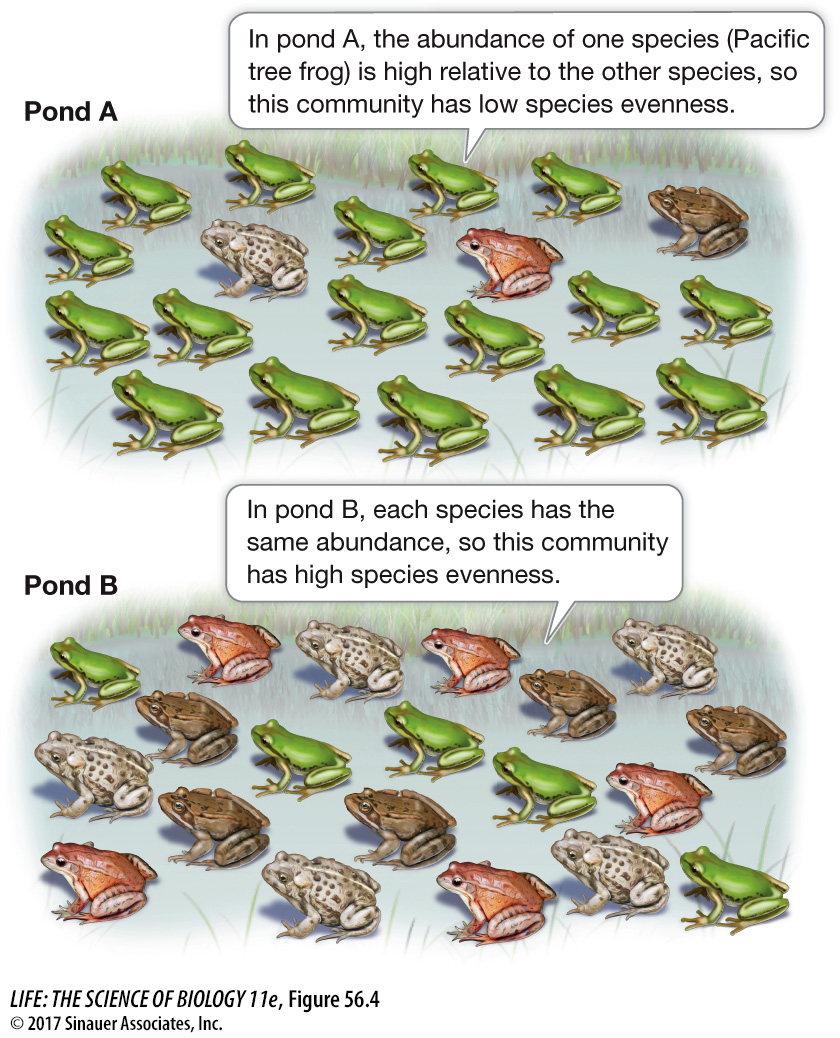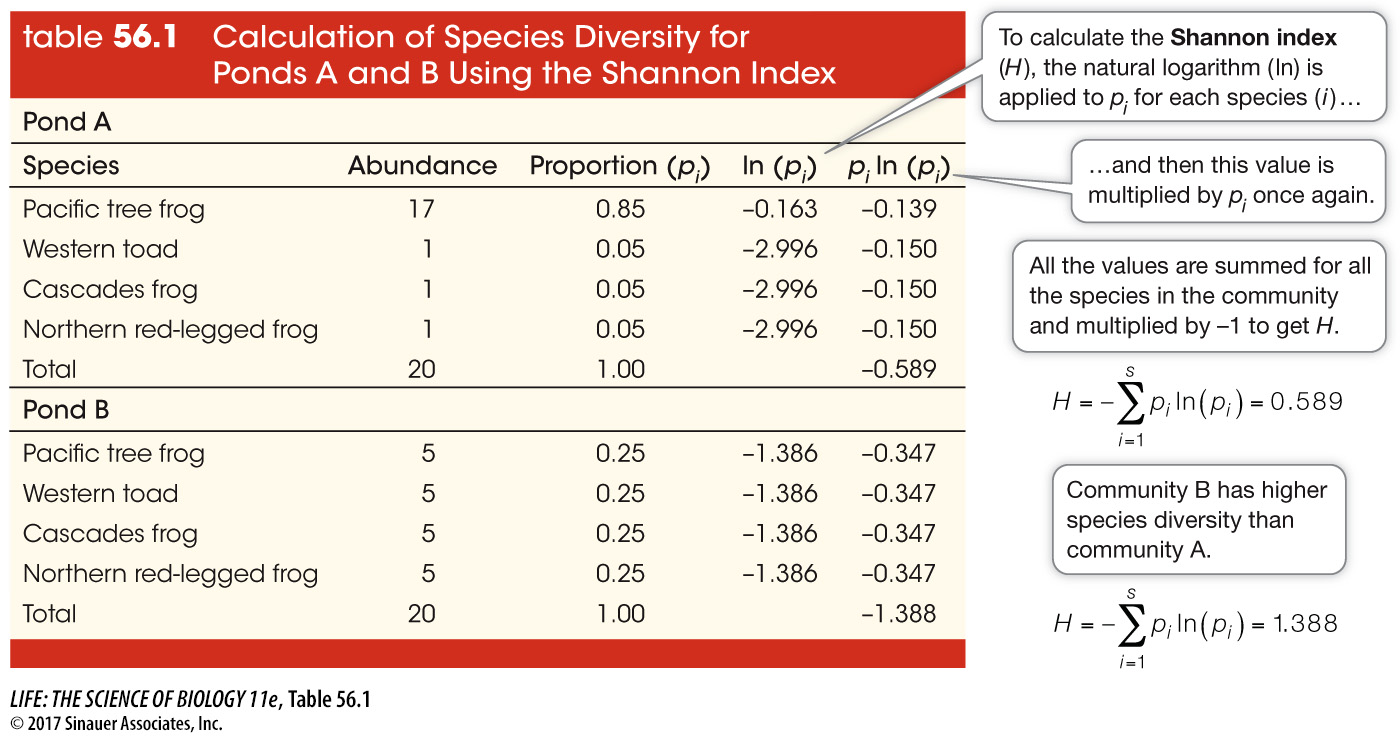Species diversity and composition are important descriptors of community structure
Communities vary widely in species number and species composition (or the kinds of species) present. A coral-
We have thus far used the term “species diversity” to describe the number of species in a sample, community, or region, but ecologists have a more technical definition. Species diversity is a measure that combines the number of species (species richness) and their relative abundances compared with that of other species (species evenness).
The contribution of both species richness and evenness to species diversity is illustrated in the following example from Mount St. Helens (Figure 56.4). Imagine that we collect samples of 20 individual amphibians in each of two different ponds on Mount St. Helens 3 years after its eruption. Our sample from Pond A contains 17 individuals of one species (Pacific tree frog) and only 1 individual of each of the other three species (an uneven distribution). Our sample from Pond B, however, contains 5 individuals of each of four amphibian species (an even distribution of individuals). Even though the species richness of the two communities is the same (four species), Pond A is less diverse because the less abundant species are encountered less frequently compared with the single most abundant species.

Q: Which pond, A or B, has higher species diversity as measured using the Shannon index (see Table 56.1)? Explain.
Pond B has higher species diversity (H = 1.388) than Pond A (H = 0.589), because even though both ponds have the same species richness, Pond B has greater species evenness.
Activity 56.2 Measures of Species Diversity
There are several ways to measure species diversity quantitatively. One common measure is the Shannon index,

where
H = the Shannon index value
pi = the proportion of individuals found in the ith species
ln = the natural logarithm
s = the number of species in the community
The lowest possible value of H is zero; higher values represent greater species diversity. Table 56.1 calculates the Shannon index for amphibians in the two Mount St. Helens pond communities shown in Figure 56.4. These calculations show that Pond A has the lower Shannon index value (H), confirming mathematically that this community has lower species diversity than Pond B. Given that both communities have the same species richness, the difference in species diversity is driven by the lower species evenness in Pond A.

How does the term “biodiversity” relate to species diversity? Biodiversity is used in reference to various levels of diversity, from genes to species to communities (Figure 56.5). Implicit in this term is the interconnectedness of different scales of diversity. For example, you saw in Chapter 20 that greater genetic diversity can lead to greater fitness of populations, which in turn can promote species diversity. The greater number of different types of communities can also lead to greater diversity at larger regional and continental scales, as you saw in Chapter 53.
